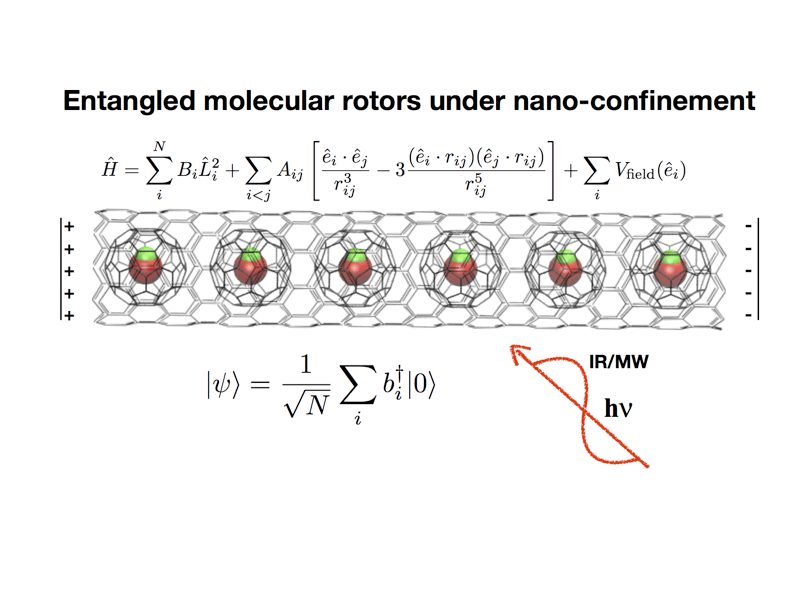Summary
The aim of the work is to develop theoretical tools to simulate and predict the behaviour of a one-dimensional chain of trapped dipolar molecules and to study the nature of entanglement as a design resource. In this device, individual water molecules are trapped inside C60 fullerene cages (also known as buckyballs), which in turn are inserted into a carbon nanotube. Such a peapod-like structure can be created using recent advances in organic synthesis. Remarkably, the quantum level structure of the guest molecule in the carbon nanotube peapod remains nearly identical to a free molecule, which makes this system a promising platform for implementing quantum information protocols, comparable to those explored with atoms and molecules trapped in optical lattices. Along the way, we are working to understand the response of the device to external electromagnetic fields, which could open the door to its use for precision electric field sensing with potential capabilities to detect fields from a single molecule.

Related Content

Mesoscopic systems as coherent control elements
Summary Mesoscopic systems provide a new tool for quantum systems design. In particular, they are enabling of robust quantum control. Here “mesoscopic system” refers to a connected network where each element, if studied alone, would be a quantum bit. The network is too big to be treated fully quantum mechanically. We do not have individual […]
September 1, 2016

Zero-Dimensional Quantum Materials for the Next Generation of Highly-Selective Chemical Sensors
Summary Heavy metals are a major public health concern and their on-site detection in water supplies is not well served by existing lab techniques. We develop a new multi-modal platform comprising functionalized quantum dots of two-dimensional materials (2D-QDs) for the sensing of four highly-toxic heavy metal pollutants (arsenic, cadmium, lead and mercury). The zero-dimensional […]
March 11, 2019

Repurposing potential drug candidates for the treatment of COVID-19
Summary The main protease (Mpro) in severe acute respiratory syndrome coronavirus 2 (SARS-CoV-2), the virus responsible for the coronavirus disease (COVID-19), has emerged as a promising drug target. The scientific community has produced a large number of crystallographic structures of the protease, which mediates viral replication and transcription. These structures report several fragments with varied chemotypes […]
May 6, 2020


